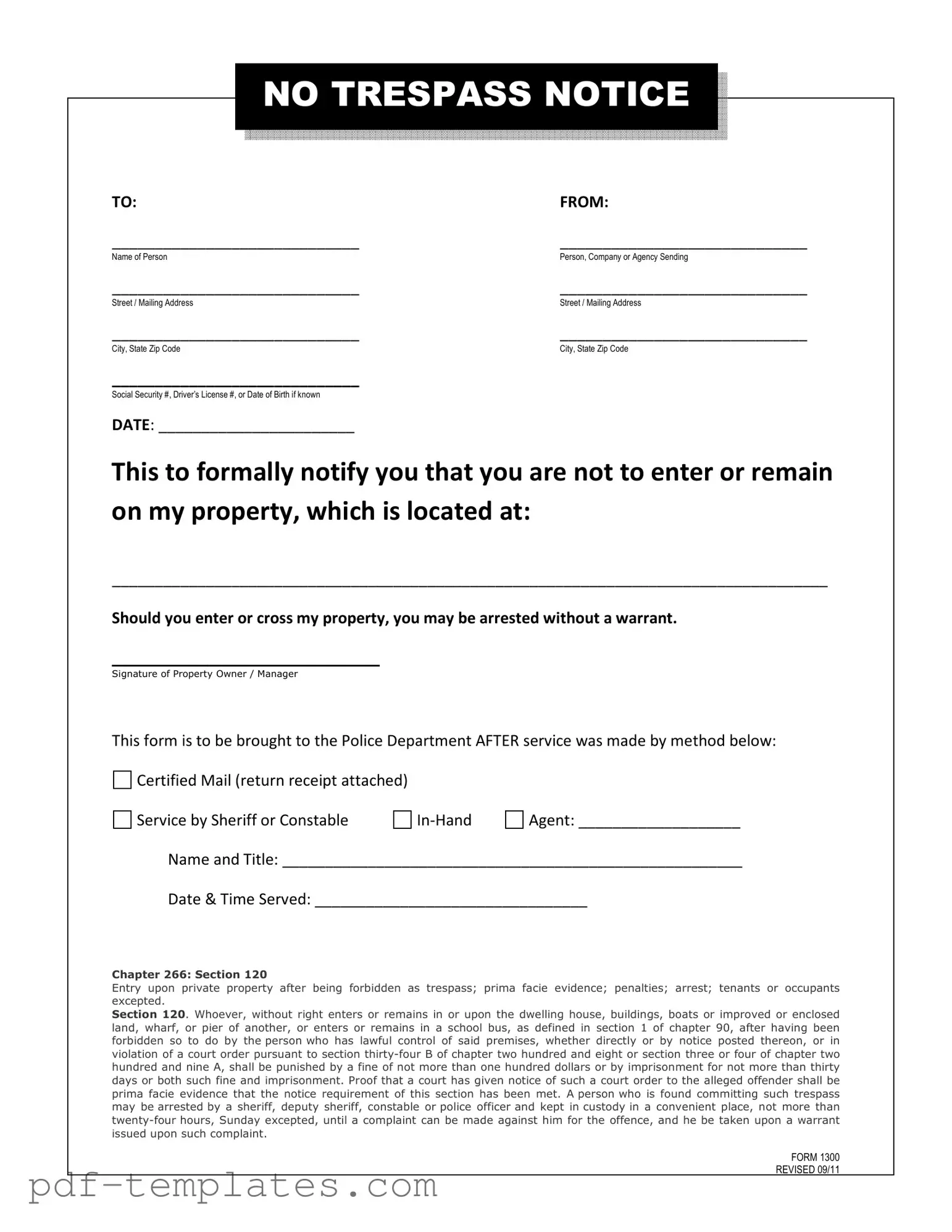A Cease and Desist Letter serves a similar purpose to a No Trespassing Letter. Both documents aim to protect an individual's rights and property. A Cease and Desist Letter is typically used to demand that someone stop a particular action that is harmful or intrusive, such as harassment or copyright infringement. Like the No Trespassing Letter, it clearly outlines the behavior that must cease and warns of potential legal consequences if the recipient fails to comply.
An Eviction Notice is another document that shares similarities with a No Trespassing Letter. While the No Trespassing Letter can be issued to anyone entering private property, an Eviction Notice is specifically directed at tenants who have violated lease agreements. Both documents serve to inform individuals that their presence is unwelcome and may lead to legal action. Eviction Notices typically follow a legal process and may involve specific timelines and conditions under state law.
A Letter of Intent to Sue can also be compared to a No Trespassing Letter. Both documents communicate a serious message regarding unwanted actions. The Letter of Intent to Sue informs the recipient that legal action is being considered due to their behavior, which may infringe on another's rights. Similar to the No Trespassing Letter, this letter serves as a warning and provides an opportunity for the recipient to rectify the situation before further legal steps are taken.
A Demand Letter is closely related to a No Trespassing Letter in that it seeks to resolve a conflict before it escalates. A Demand Letter typically requests payment or action regarding a specific issue, such as a debt or breach of contract. Both documents are formal notices that outline the sender's grievances and the consequences of inaction. They aim to encourage resolution without resorting to litigation.
A Restraining Order is another legal document that parallels the No Trespassing Letter. While the No Trespassing Letter is a notice regarding property, a Restraining Order is a court order that prohibits an individual from coming near another person. Both serve to protect individuals from unwanted intrusion or harassment. A Restraining Order usually involves a legal process and provides specific guidelines for maintaining distance and safety.
A Property Dispute Letter is similar in intent to a No Trespassing Letter, as both documents address issues related to property rights. A Property Dispute Letter may be used to formally contest boundaries, usage, or access to property. It outlines the sender's claims and requests that the recipient refrain from actions that may infringe upon those rights, much like the No Trespassing Letter prohibits entry onto private property.
A Texas Vehicle Purchase Agreement is a crucial document that facilitates the transfer of vehicle ownership, ensuring clear communication between the buyer and seller regarding the terms of the sale. By specifying details such as the sale price, vehicle information, and associated warranties, both parties can avoid misunderstandings throughout the transaction process. For further information on structuring this agreement, you can refer to the form available at https://documentonline.org/blank-texas-vehicle-purchase-agreement.
Lastly, a Notice of Violation can be compared to a No Trespassing Letter. This document is often issued by local authorities to inform individuals or businesses that they are in violation of certain laws or regulations. Both documents serve as formal notifications that specific actions are not permissible. A Notice of Violation may lead to fines or other penalties, while a No Trespassing Letter warns of potential arrest for trespassing.
